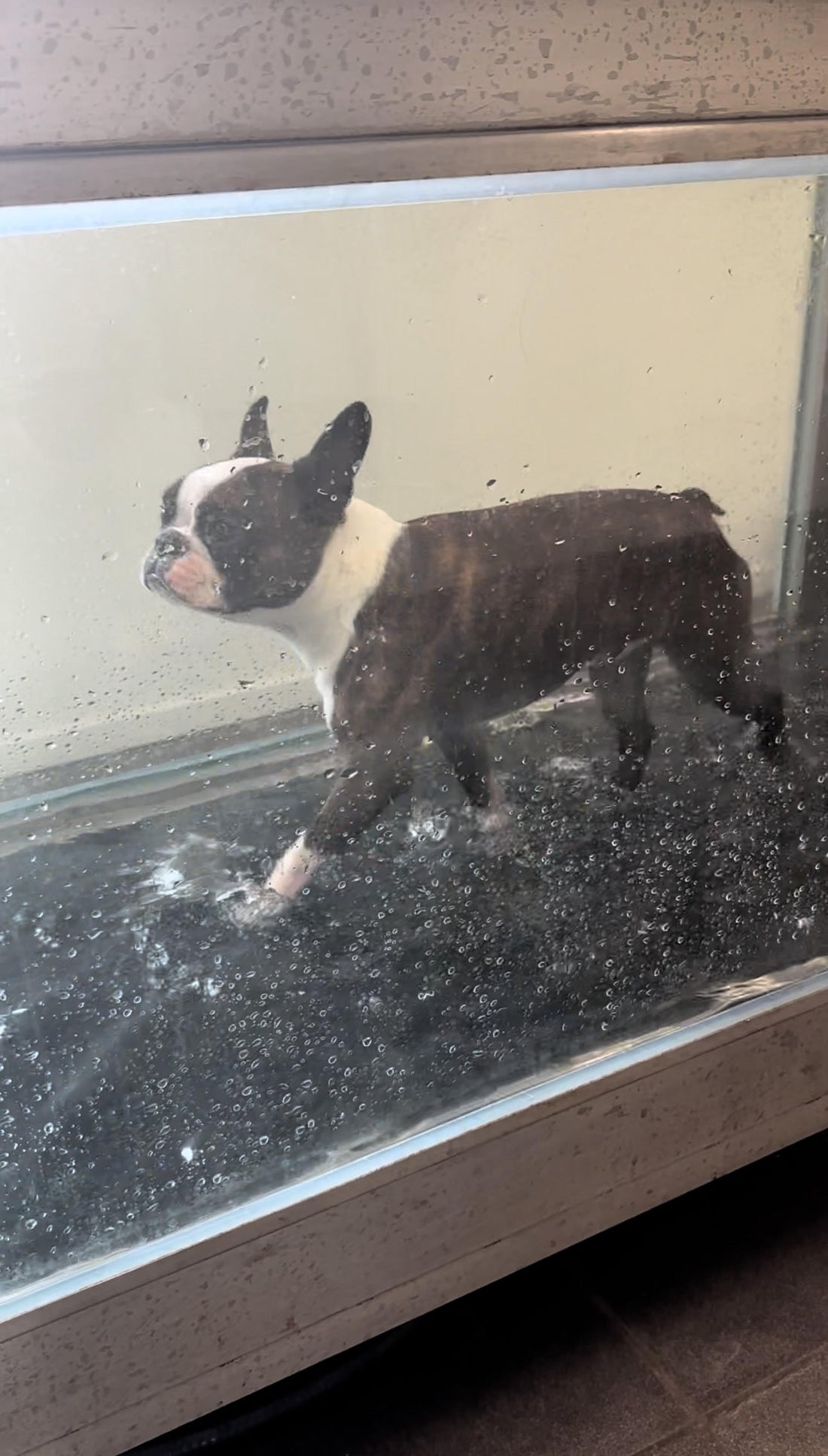
Wellness for show dogs Part 2
Share
A show dog should be shown in top condition and of course we also want them to stay beautiful, strong and healthy well into their old age, so a training form that subject the dog to as little wear and tear as possible are preferred.
Water training on a water treadmill is an excellent way to improve your dog's movement and physical health. By utilizing the natural resistance of the water, the dog can train muscles and joints without being exposed to the same load as when training on land.
On a water treadmill, the dog gets to walk or run in water, where the water's resistance helps build strength and improve endurance. The water supports part of the dog's weight, which reduces the load on the joints and reduces the risk of injuries during training. At the same time, more muscle work is required to move in the water, which leads to increased muscle strength. In addition to strengthening the muscles, water treadmill training helps to improve the dog's mobility and balance.
The water creates an even resistance around the body, which encourages more controlled and stable movements.
The advantage of the water treadmill, compared to swimming, is that the dog has to use all four legs and not just work with the front legs. Speed and resistance can also be regulated using the water level, providing a more controlled workout.
Another advantage of water treadmill training is that it can be adapted to each dog's specific needs. The speed and water level can be adjusted to match the dog's fitness level and goals. This makes training accessible to dogs of all sizes and ages.
The exercise in water strengthens the entire longitudinal back and leg muscles very effectively and stimulates the entire locomotor system, while being relaxing.
In summary, training on a water treadmill is a gentle and effective way to improve the dog's movements, strengthen muscles and joints and support rehabilitation after injuries.
It is an exercise that not only improves the dog's physical condition, but also contributes to an increased quality of life.
So how do you know what water depth you should have? When you start water treadmilling with your dog, it is recommended that you take the help of a dog physiotherapist who can individually adjust the water level and which speed suits your dog. At most health care/rehab facilities for dogs, it is a requirement to complete the first session before you can train on your own.
A short guide:
Shallow water depth (up to carpus or hock)
When the water reaches up to the dog's carpus (fore knee) or hock (hump), it means a minimal lifting force on the body, resulting in a minor reduction in body weight.
At this depth, the dog still gets a lot of weight-bearing exercise, which can be
beneficial for building strength and endurance, especially in the lower body. The dog gets to practice lifting its legs higher than usual to get through the water, which strengthens the muscles around the joints and improves mobility. This depth is used by many to train their fully healthy dogs to train and improve their movements before showing.
Medium-deep water (up to knees or elbows)
When the water reaches up to the knees or elbows, the dog's body begins to become more
relieved, and the weight load on the joints is further reduced. This depth is effective in increasing muscle strength and endurance without putting too much stress on the joints, which is especially good for dogs with mild joint problems or recovering from injuries.
The range of motion improves, and the dog gains increased stability and balance
the water's resistance means it has to work harder to maintain a steady course.
Deeper water (up to chest or higher)
At this depth, the water carries a large part of the dog's weight, which is greatly reduced
the load on joints and bones. This is particularly beneficial for dogs with
serious joint problems, such as arthritis, or recovering from surgery. In deeper water, the dog has to work against a higher resistance to move forward, which provides an excellent muscle workout without risking joint overload. This depth also helps improve endurance and fitness, as the dog must use more muscle groups to stabilize and propel itself in the water
The water treadmill is a very good option even for dogs that are not so fond of swimming as they feel a certain security from constantly being in contact with the ground. After a calm introduction, even dogs that dislike water usually get used to the treadmill.
